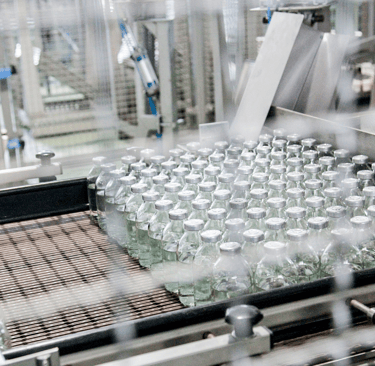Navigating the Biopharma Boom: Current Trends and Opportunities in Pharmaceutical Manufacturing
The pharmaceutical industry has entered a new era of growth, driven by unprecedented investments, technological advancements, and a focus on sustainability. With major expansions in biopharma manufacturing and innovations reshaping the landscape, 2025 promises to be a transformative year for the sector. This blog delves into the latest developments, trends, and their implications for pharmaceutical professionals, offering actionable insights to navigate the industry's dynamic evolution.
The Pharma University
1/27/20253 min read


Introduction The pharmaceutical industry has entered a new era of growth, driven by unprecedented investments, technological advancements, and a focus on sustainability. With major expansions in biopharma manufacturing and innovations reshaping the landscape, 2025 promises to be a transformative year for the sector. This blog delves into the latest developments, trends, and their implications for pharmaceutical professionals, offering actionable insights to navigate the industry's dynamic evolution.
1. The Rise of Biopharma Manufacturing Hubs
North Carolina: A Case Study in Biopharma Growth
North Carolina has solidified its position as a biopharma hub, with major investments from industry giants:
Amgen: A $1.5 billion facility in Holly Springs, creating over 725 jobs, focused on advanced manufacturing technologies.
Eli Lilly: Recent expansions contributing to life sciences innovation and local talent development.
FUJIFILM Diosynth Biotechnologies: Strengthening biopharma capabilities with state-of-the-art facilities.
Global Expansion Trends
The U.S. isn’t the only region experiencing growth. Countries like Ireland, Singapore, and Switzerland are leveraging strategic investments to attract biopharma operations. These hubs focus on tax incentives, a skilled workforce, and access to global markets.
Implications for Professionals:
Skilled talent in validation, GMP compliance, and bioprocessing is in high demand.
Opportunities abound for professionals to relocate to growing hubs or enhance their expertise in specialized areas like monoclonal antibodies and gene therapies.
2. Technological Innovations Reshaping Manufacturing
Pharma 4.0 and Digital Transformation
The integration of IoT, AI, and predictive analytics is redefining manufacturing:
Real-Time Data Monitoring: Ensures quality control and minimizes downtime.
AI-Driven Risk Management: Automates validation processes and improves compliance accuracy.
Smart Factories: Digital twins and cloud-based systems enhance process efficiency and reduce operational costs.
Continuous Manufacturing
Continuous manufacturing is gaining traction as an alternative to traditional batch production:
Efficiency Gains: Reduces production timelines by up to 30%.
Improved Quality: Ensures consistency by minimizing process variability.
Regulatory Support: FDA and EMA actively encourage adoption to meet growing demand for precision therapies.
Implications for Professionals:
Staying updated on digital tools and continuous processes is critical for career growth.
Training in data analytics and automation can set professionals apart in a competitive market.
3. Sustainability in Pharmaceutical Manufacturing
Green Chemistry and Sustainable Practices
Environmental responsibility is now a priority, with companies adopting:
Eco-Friendly Processes: Using green chemistry to minimize waste and energy consumption.
Sustainable Packaging: Replacing plastics with biodegradable materials.
Wastewater Management: Advanced systems to treat and recycle water in manufacturing facilities.
Regulatory Push for Sustainability
Governments and regulatory bodies are incentivizing sustainability through tax breaks and grants. The global push toward carbon neutrality has made compliance with environmental standards a competitive advantage.
Implications for Professionals:
Expertise in sustainable practices is becoming a valuable asset.
Collaboration with regulatory bodies and environmental experts is critical for successful implementation.
4. Addressing Global Challenges in Biopharma
Workforce Shortages
As the demand for skilled professionals grows, companies face challenges in recruiting talent. Initiatives to upskill existing employees and partnerships with universities are helping address the gap.
Supply Chain Resilience
The pandemic highlighted vulnerabilities in the supply chain. Companies are diversifying suppliers and investing in local manufacturing to mitigate risks.
Regulatory Harmonization
With global operations, aligning with diverse regulatory frameworks remains a challenge. Initiatives like ICH’s harmonization efforts aim to simplify compliance.
Implications for Professionals:
Understanding global regulations and supply chain dynamics can enhance career opportunities.
Building cross-functional skills in logistics, regulatory affairs, and quality assurance is increasingly important.
Conclusion The pharmaceutical manufacturing sector is evolving rapidly, with growth driven by biopharma investments, technological innovation, and a commitment to sustainability. For professionals, this is a time of opportunity—to adapt, learn, and lead. By staying informed about industry trends and embracing continuous learning, pharmaceutical professionals can position themselves at the forefront of this dynamic field.
What trends are you seeing in your role? Let’s discuss how we can shape the future of pharmaceutical manufacturing together!
#PharmaceuticalManufacturing #Biopharma #Sustainability #Innovation #CareerGrowth #ThePharmaUniversity #PharmaUni
The Pharma University
Empowering professionals in pharmaceutical manufacturing
© 2025 ThePharmaUniversity.org.
All Rights Reserved.

